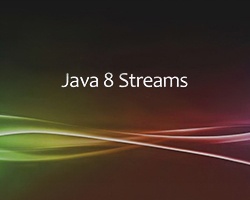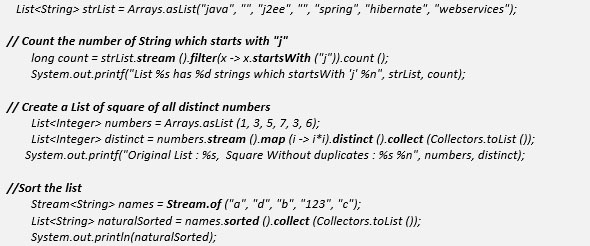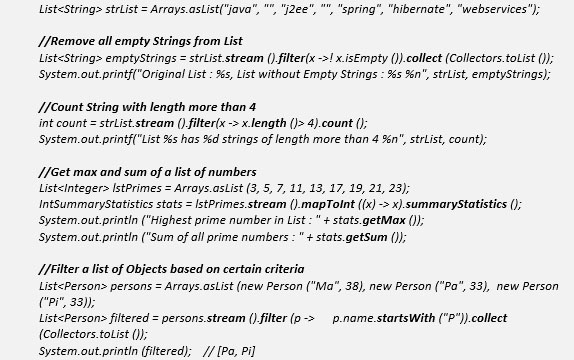Manumeet Mukund
 Collections are the fundamental to many programming tasks in Java. However, despite being necessary for almost any Java application, manipulating collections is a nightmare in some cases, especially with a large collection of elements. In Java 8, the language designers have made programmer’s life easier by introducing Streams. With the introduction of Stream API, programmer can manipulate collections of data in a declarative way. In addition to this, stream can be processed in parallel without writing multithreading logic.
Collections are the fundamental to many programming tasks in Java. However, despite being necessary for almost any Java application, manipulating collections is a nightmare in some cases, especially with a large collection of elements. In Java 8, the language designers have made programmer’s life easier by introducing Streams. With the introduction of Stream API, programmer can manipulate collections of data in a declarative way. In addition to this, stream can be processed in parallel without writing multithreading logic.
Background
Prior to JDK 8, Collections could only be managed through iterators with the use of for, for-each or while loops. It means that the computer is instructed to execute the algorithm steps.

The above approach has following tailbacks:
- We need to express how the iteration will take place, this requires an external iteration as the client program to handle the traversal.
- The program is sequential; there is no way to do it in parallel.
- The code is verbose.
Java 8 - Stream APIs
Java 8 introduces Stream API to circumvent the above-mentioned shortcomings. It also allows us to leverage the other changes, e.g., lambdaexpression, method reference, functional interface and internal iteration introduced via forEach () method.
The above logic of the program can be rewritten in a single line:

The Streamed content is filtered with the Filter method, which takes a predicate as its argument. The Filter method returns a new instance of Stream<T>. The mapfunction is used to transform each element of the stream into a new element. The map returns a Stream<R>, in the above example, we used mapToInt;to get the IntStream. Finally, IntStream has a sum operator, which calculates the sum of all elements in the stream, and we get the expected result so cleanly.
API overview
The chief type in the JDK 8 Stream API package java.util.streamis the Stream;interface. The types IntStream, LongStream, and DoubleStream are streams over objects and the primitive int, long and double types.
Differences between a Stream and a Collection:
- A stream does not store data.
- An operation on a stream does not modify its source, but simply produces a result.
- Collections have a finite size, but streams do not.
- Like an Iterator, a new stream must be generated to revisit the same elements of the source.
We can obtain Streams in the following ways:
- From a Collection via the stream() and parallelStream() methods;
- From an array via Arrays.stream(Object[]);
- From static factory methods on the stream classes, such as Stream.of(Object[]);IntStream.range(int, int) or Stream.iterate(Object, UnaryOperator);
- The lines of a file from BufferedReader.lines();
- Streams of file paths from the methods in Files;
- Streams of random numbers from Random.ints();
- Other stream-bearing methods: BitSet.stream(), Pattern.splitAsStream(java.lang.CharSequence), and JarFile.stream().
Stream Operations
Intermediate Operations
Stateless Operations, such as filter and map, retain no state from previous element. Stateful Operations, such as distinct and sorted, may have state from the previous elements.

Terminal Operations
Operations, such as Stream.forEach or IntStream.sum, may traverse the stream to produce a result or a side-effect. When the terminal operation is performed, the stream pipeline is considered consumed, and can no longer be used.

Reductional Operations
The general reductionoperations are reduce () and collect () and the special reductionoperations are sum (), max (), or count ().

Parallelism
All the operations of streams can be executed either in serial or in parallel. For example, Collection has methods Collection.stream() and Collection.parallelStream(), which produces sequential and parallel streams respectively.





